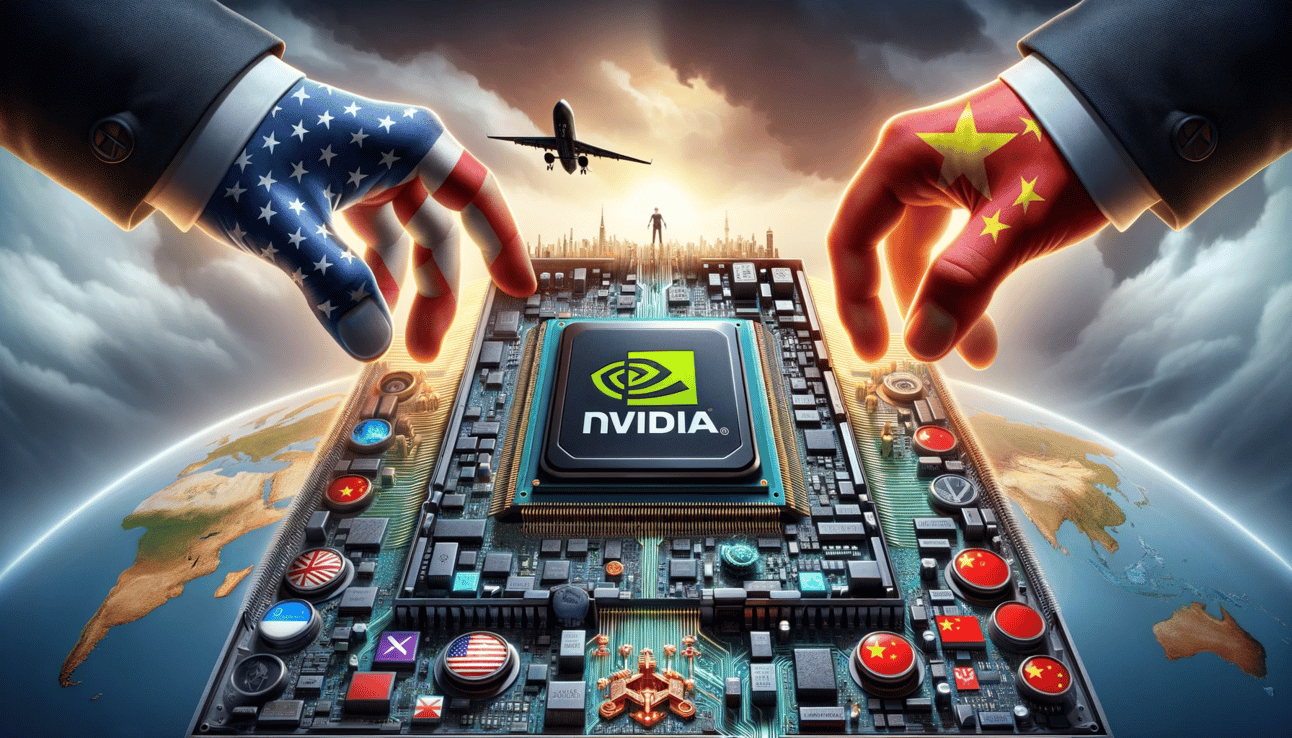- The Abacus
- Posts
- Nvidia is far away from a true Renaissance
Nvidia is far away from a true Renaissance
How U.S. chipmakers struggle between policy restrictions and customer demands.

"Chipmaker struggle between US policy restrictions and chinese customer demands " / DALL-E
Today let’s talk about a complex topic —— U.S. chips export limits and how U.S. chipmakers struggle between policy restrictions and customer demands.
Technology supremacy, recently centered on AI, has become a domain fiercely contested by Beijing and Washington. After the 2021 global supply crunch, chips are the main chess pieces in this game. The most recent development occurred on November 6th, following the October version of the chips export ban on semiconductor technology, a critical component of supercomputers used to build AI platforms. U.S. Bureau of Industry and Security (BIS) hosted a public briefing that hinted at potential updates to new export control regulations in the future.
This maneuver, while ostensibly aimed at hampering China's technological advancement, has inadvertently placed U.S. chipmakers in a precarious position. Companies such as Nvidia, Micron, Intel, and even the Dutch lithography equipment supplier ASML find themselves directly impacted by these restrictions, losing access to what is arguably the world's largest semiconductor market. In recent months, they have spent time lobbying against tighter restrictions, aiming to boost other area markets, and designing special version chips for the Chinese market to circumvent the early rules.
That’s why when I opened Nvidia's financial report, my first impression was that it's pretty shining. The company reported robust revenue of $18.1 bn in the third quarter and anticipates approximately $20 bn in the fourth quarter. Management expects growth in other regions to offset declining sales in China. No surprisingly, Nvidia's stock experienced a decline in after-hours trading.
Last year, the CHIPS Act, a $50 billion package regarded as a bipartisan triumph, was signed by President Biden to support American advanced chipmakers. However, compared to Asia, the high cost of constructing a new fab, operating expenses, and smaller scale are not considered sweeteners for chipmakers.
Nvidia can't afford to lose the Chinese market, as historical data shows that approximately 20%-25% of Nvidia's data center revenue is derived from mainland China. Financial Times reported Nvidia secured a $5 billion chip order from Chinese internet giants like Baidu and Alibaba to power their AI projects but canceled these deliveries in October.
It’s a game between chipmakers and policymakers.
Developing China-specific chips has become a key strategy to maintain presence in China's shrinking market, with adjusted peak performance and performance density. Models like the H20, L20, and L2, compliant with upcoming regulations, are set for release. The chief financial officer stated, “Designing and developing these new products is a significant process,” confirming the information.
Another side, China's chip executives are seeking alternatives to replace chips, like Huawei's Ascend 910, as special version chips lack a clear sales timeline and sufficient performance, reducing cost-effectiveness. Notably, Nvidia's A800/H800 chips have been sold in China at 50%-100% above the usual price, as reported by Reuters in June:
“Two vendors there, who spoke with Reuters in person on condition of anonymity, said they could provide small numbers of A100 artificial intelligence chips made by the U.S. chip designer, pricing them at $20,000 a piece - double the usual price.”
The chip industry is highly cyclical, and some chipmakers, reluctant to invest time in designing new chips, are walking a tightrope. Applied Materials is now under criminal investigation by the DOJ, accused of bypassing export restrictions to China's top chipmaker, SMIC.
Yes, it’s not a champain time for Nvidia. We'll see what Washington's next step.
Reply